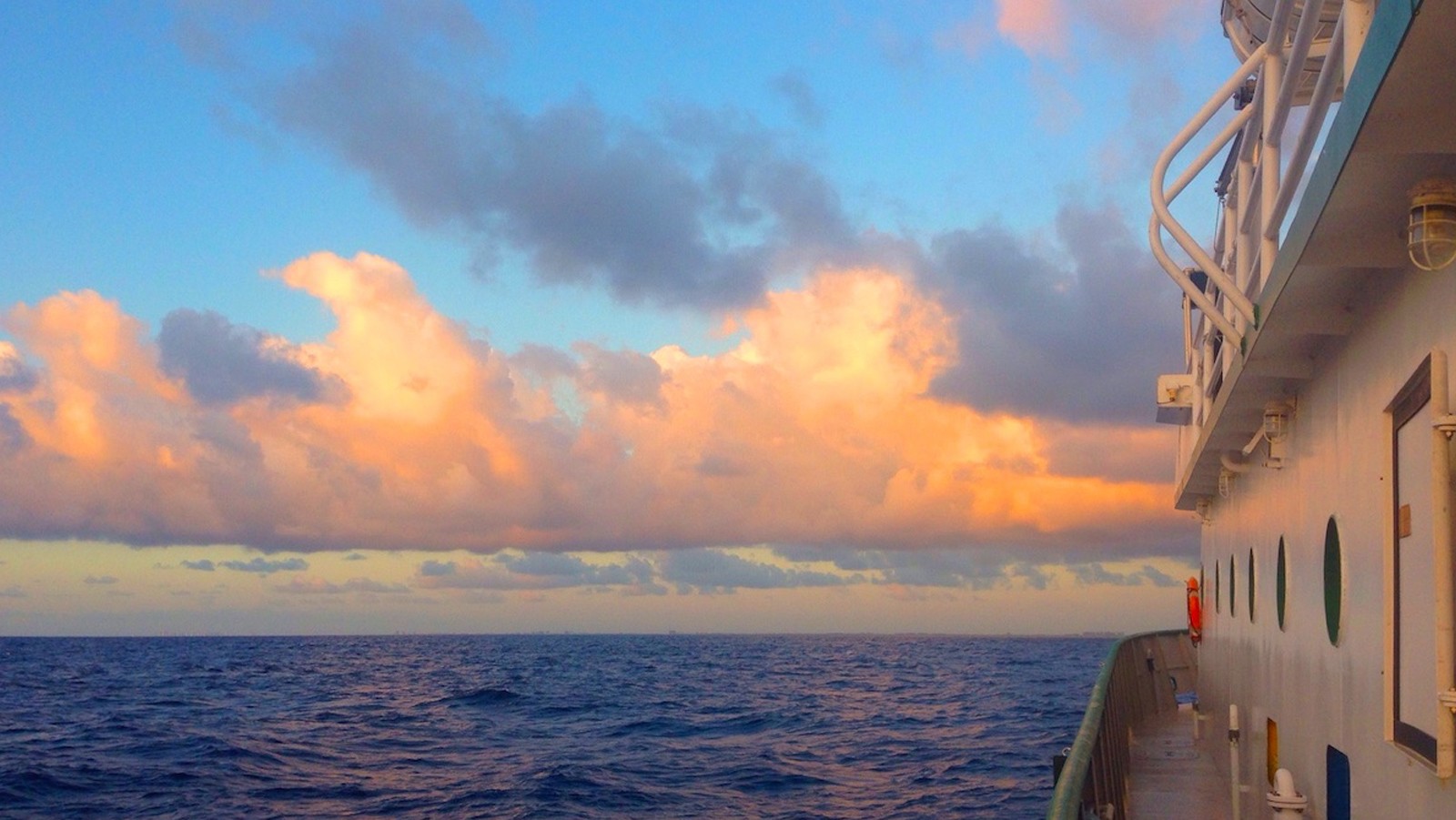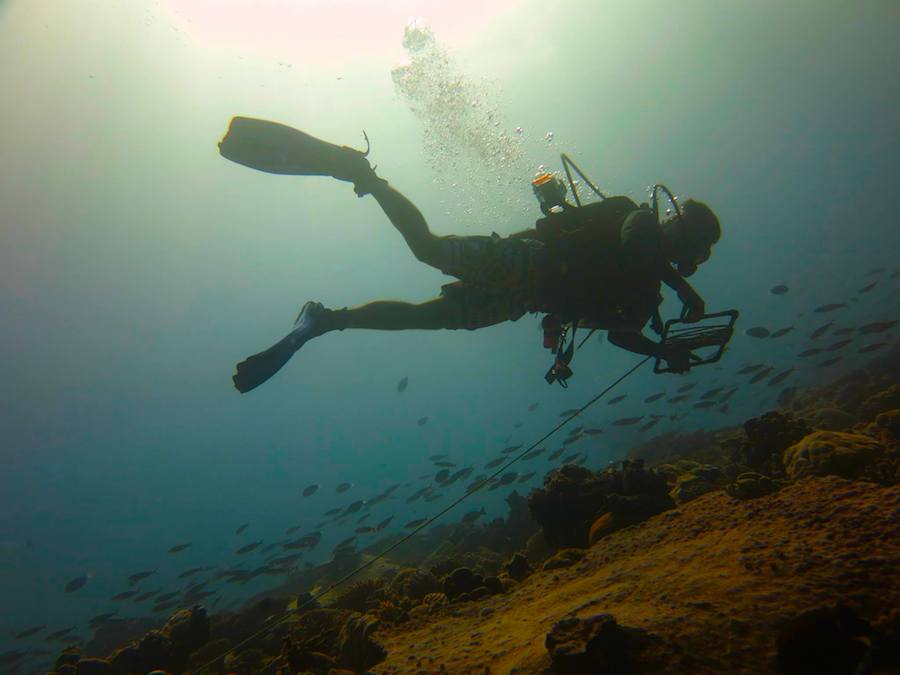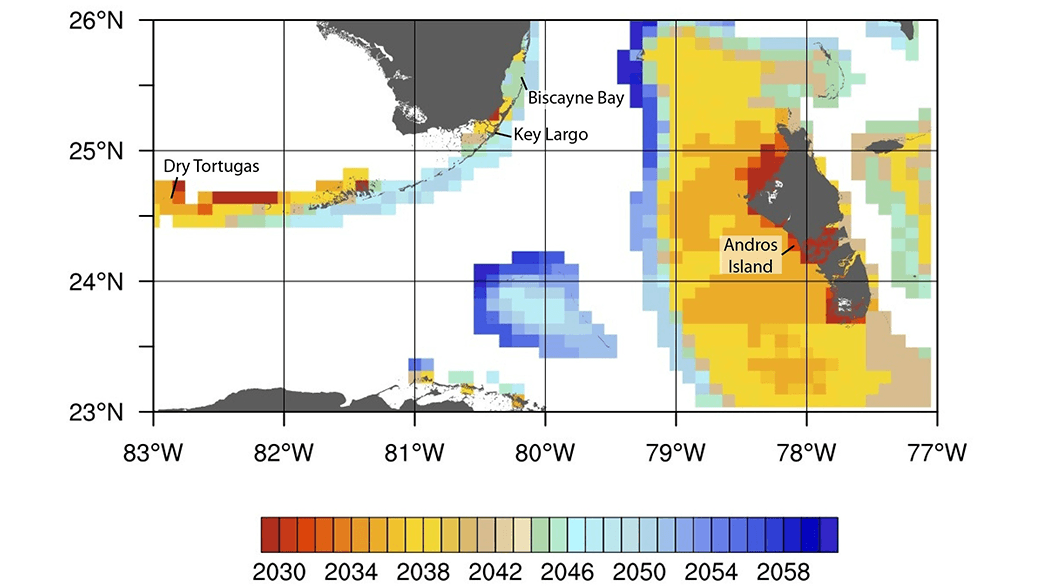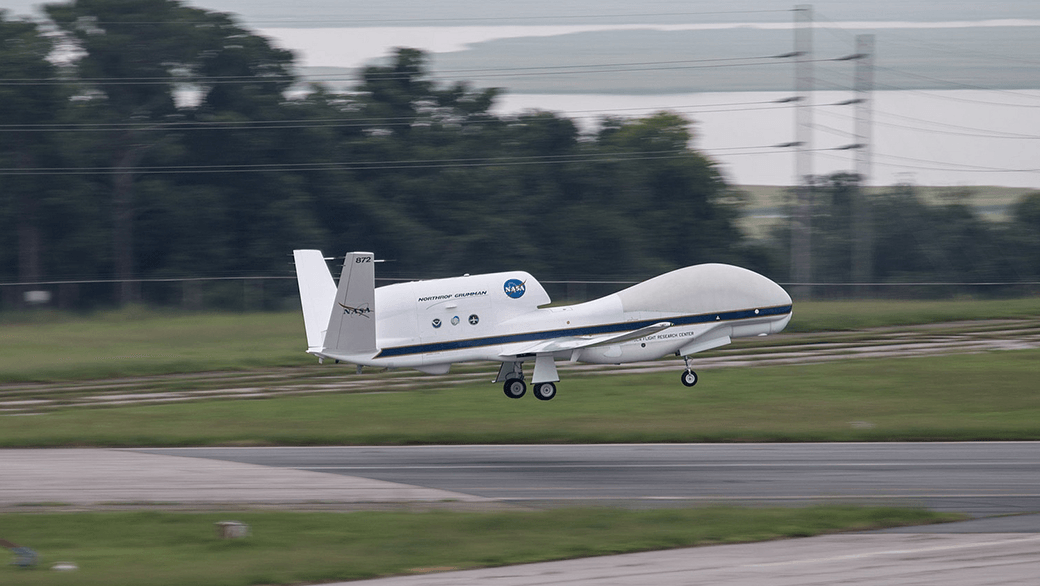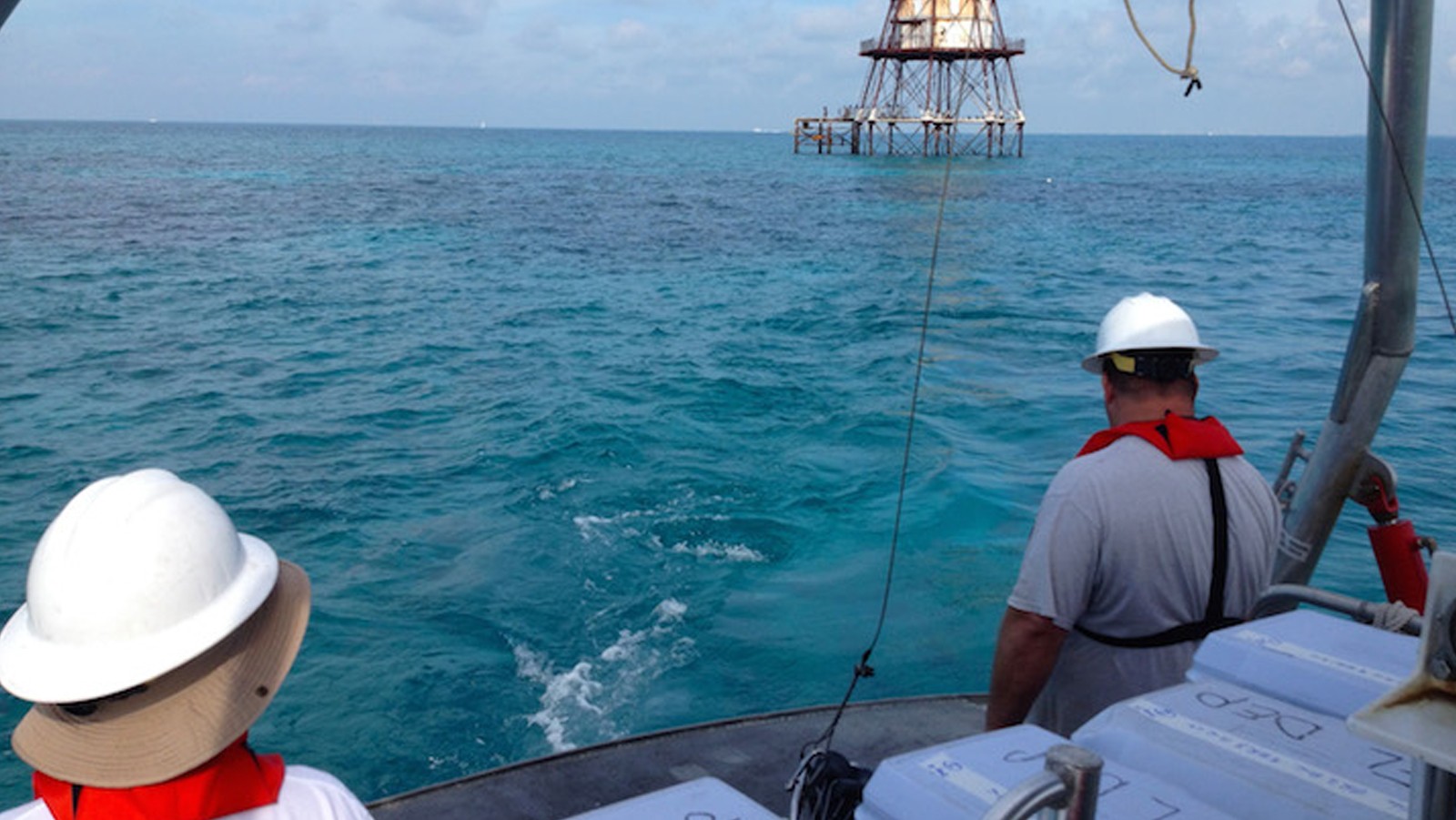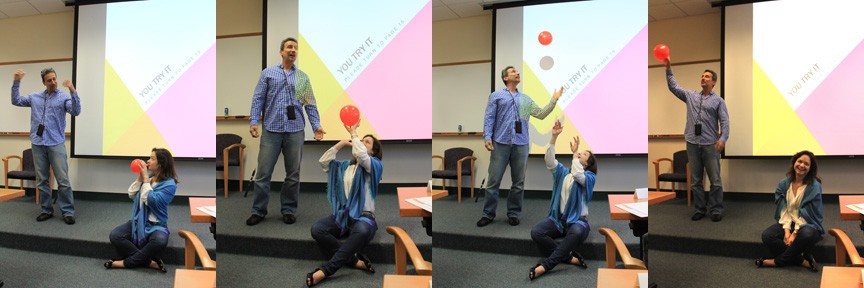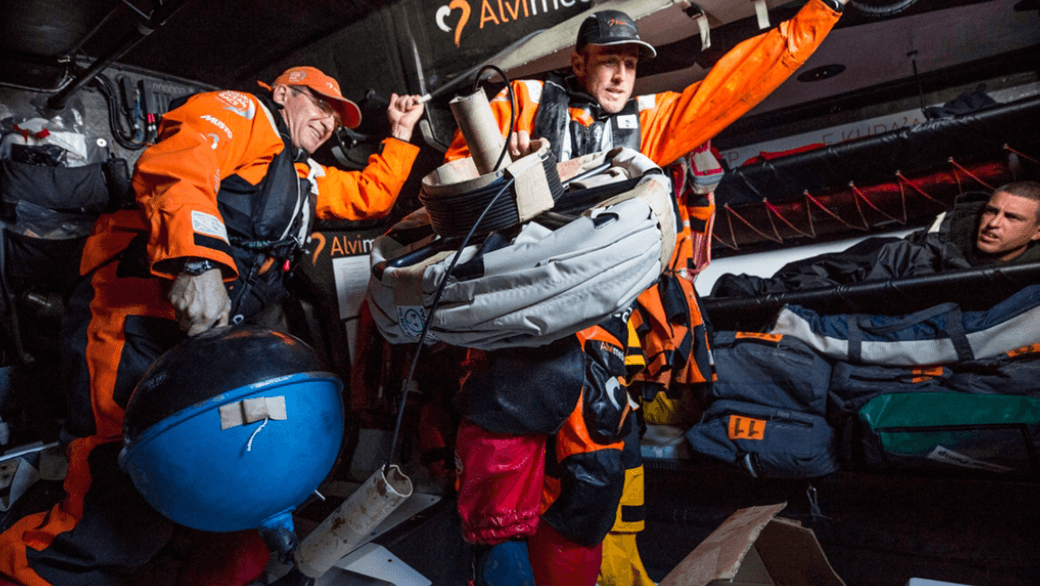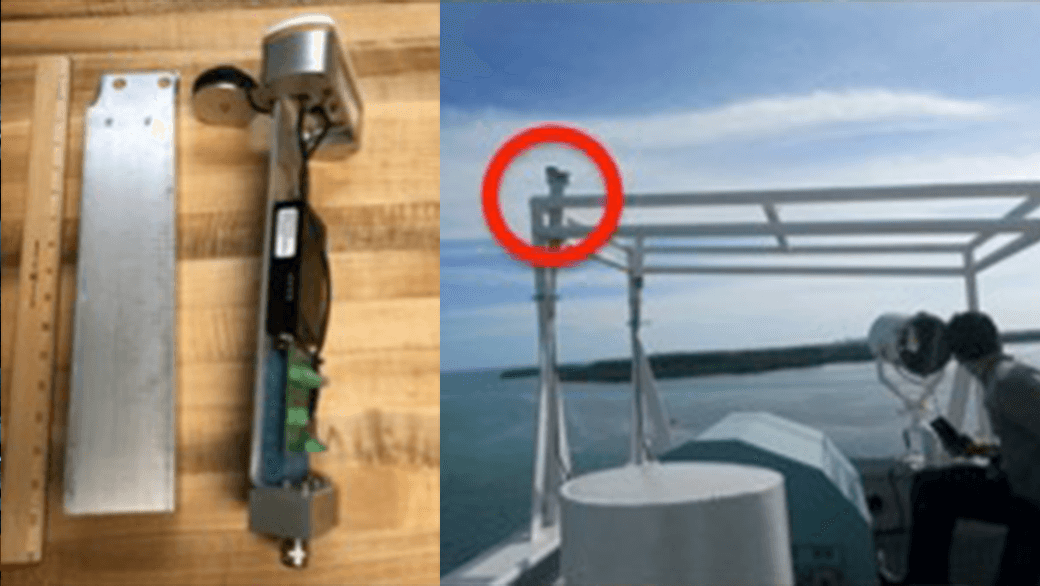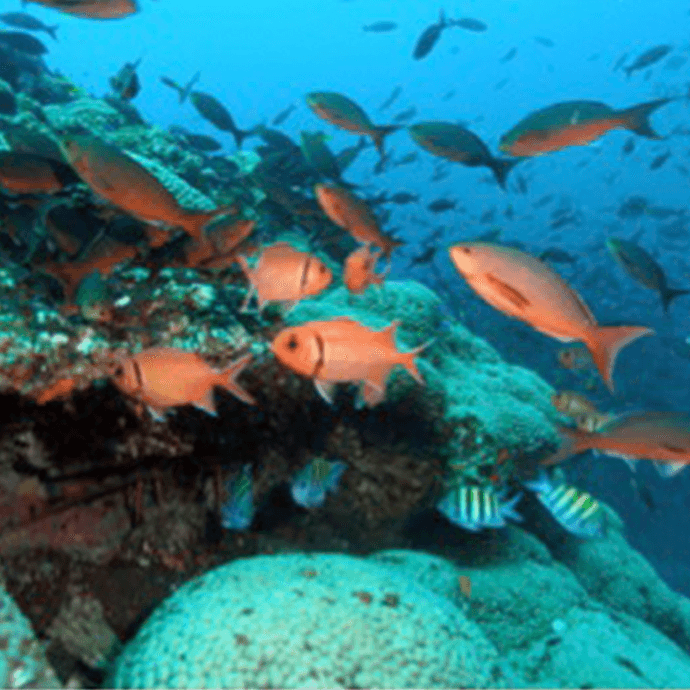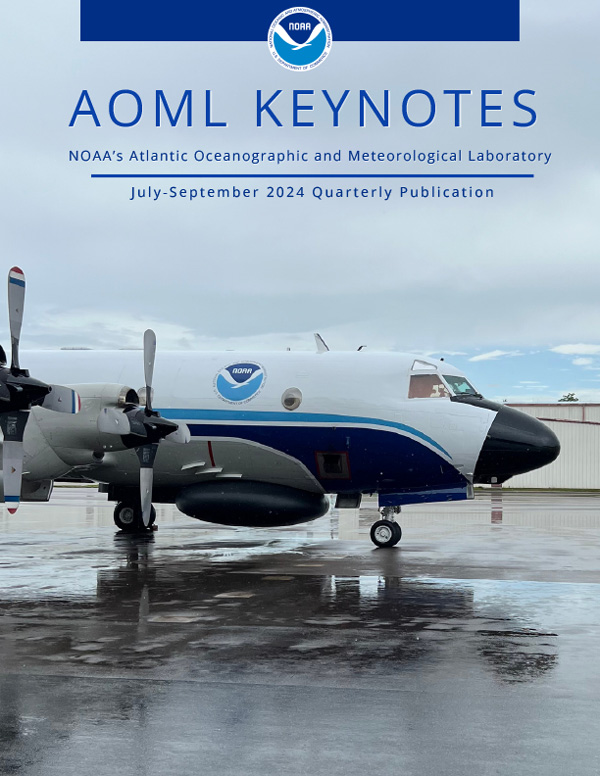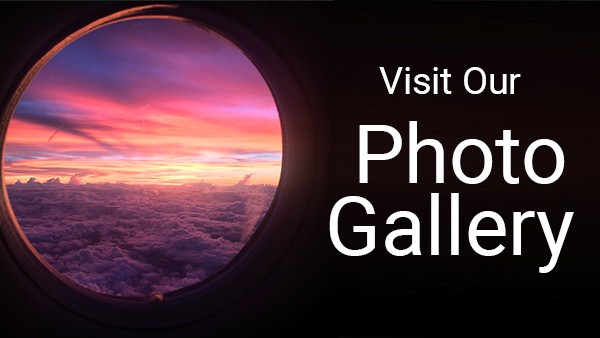April Hydrographic Survey Conducted in the Florida Straits
AOML physical oceanographers conducted a hydrographic survey along the 27th north parallel in the Florida Straits aboard the R/V F.G. Walton Smith on April 9-10, 2015. The cruise was conducted as part of the ongoing Western Boundary Time Series project, which is designed to quantify Florida Current volume transport and water mass changes. Scientists measured full water column values of salinity, temperature, and oxygen using CTD equipment. This survey and others help to calibrate daily estimates of the Florida Current volume transport.
